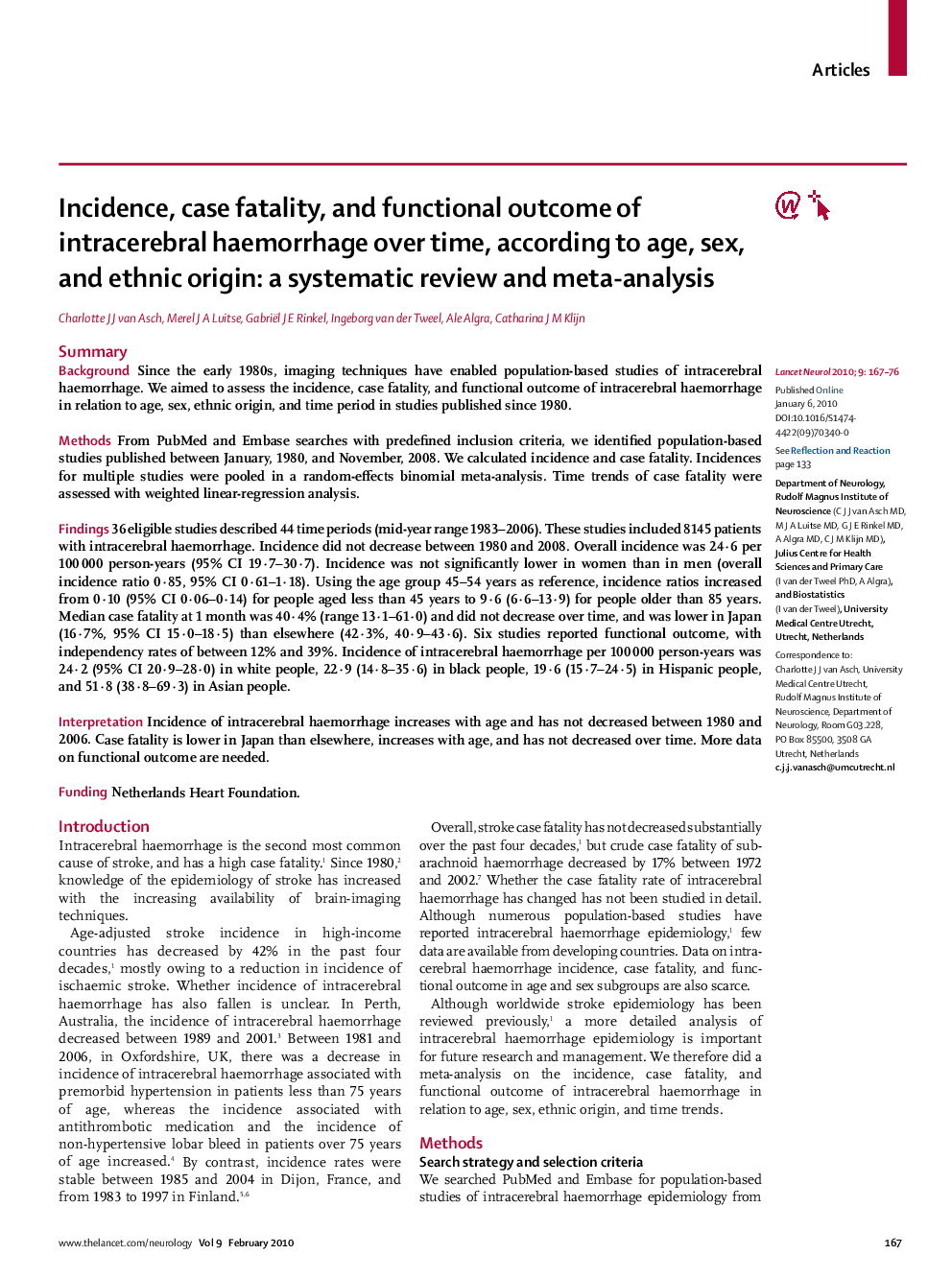| Article ID | Journal | Published Year | Pages | File Type |
|---|---|---|---|---|
| 3067141 | The Lancet Neurology | 2010 | 10 Pages |
SummaryBackgroundSince the early 1980s, imaging techniques have enabled population-based studies of intracerebral haemorrhage. We aimed to assess the incidence, case fatality, and functional outcome of intracerebral haemorrhage in relation to age, sex, ethnic origin, and time period in studies published since 1980.MethodsFrom PubMed and Embase searches with predefined inclusion criteria, we identified population-based studies published between January, 1980, and November, 2008. We calculated incidence and case fatality. Incidences for multiple studies were pooled in a random-effects binomial meta-analysis. Time trends of case fatality were assessed with weighted linear-regression analysis.Findings36 eligible studies described 44 time periods (mid-year range 1983–2006). These studies included 8145 patients with intracerebral haemorrhage. Incidence did not decrease between 1980 and 2008. Overall incidence was 24·6 per 100 000 person-years (95% CI 19·7–30·7). Incidence was not significantly lower in women than in men (overall incidence ratio 0·85, 95% CI 0·61–1·18). Using the age group 45–54 years as reference, incidence ratios increased from 0·10 (95% CI 0·06–0·14) for people aged less than 45 years to 9·6 (6·6–13·9) for people older than 85 years. Median case fatality at 1 month was 40·4% (range 13·1–61·0) and did not decrease over time, and was lower in Japan (16·7%, 95% CI 15·0–18·5) than elsewhere (42·3%, 40·9–43·6). Six studies reported functional outcome, with independency rates of between 12% and 39%. Incidence of intracerebral haemorrhage per 100 000 person-years was 24·2 (95% CI 20·9–28·0) in white people, 22·9 (14·8–35·6) in black people, 19·6 (15·7–24·5) in Hispanic people, and 51·8 (38·8–69·3) in Asian people.InterpretationIncidence of intracerebral haemorrhage increases with age and has not decreased between 1980 and 2006. Case fatality is lower in Japan than elsewhere, increases with age, and has not decreased over time. More data on functional outcome are needed.FundingNetherlands Heart Foundation.
